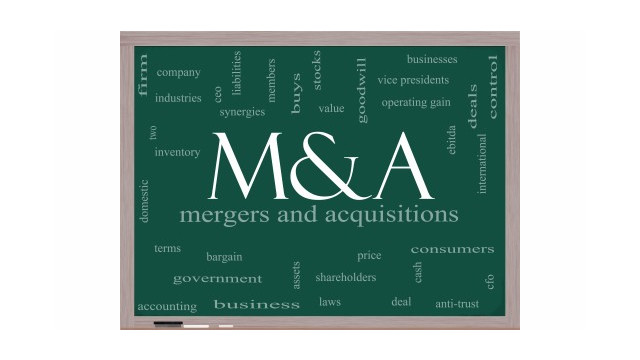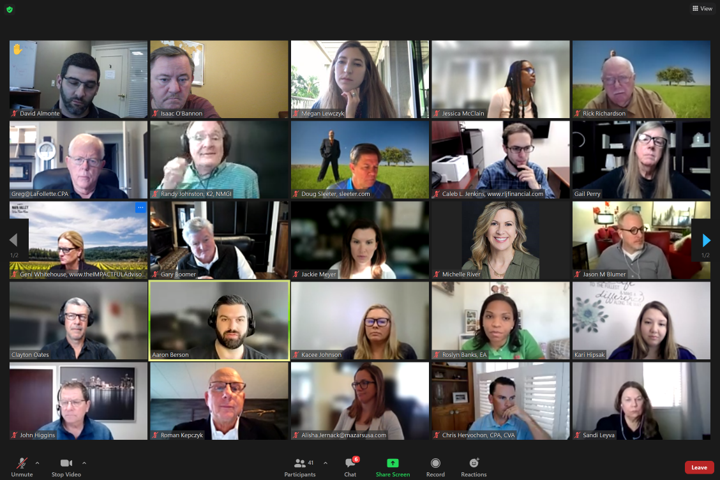From the September 2020 Issue.
What is your vision of document management? Is it simply document storage, or is it comprehensive? Do you picture an end-to-end solution including document gathering with Prepared by Client (PBC) capability, portals, eSignature, as well as integration into your other key applications such as tax, audit, and email?
The more this year of clear vision has progressed, the more it has been blurred by the COVID-19 pandemic, frantic reactive thinking, and desperation. However, some firms have continued to look to the future, and have been proactive at choosing their next-generation technology tools. This opportunity to build for the future has a unique viewpoint since the future “new normal” may seem different than the past, providing a diverse work environment as well as hope for the future.
The critical item for choosing a new document management system (DMS) is to focus on the client experience. In past columns, we have discussed going from document management version one to version two, three, and four. The current generation of document management products offer so much more than document storage solutions (DSS) and do-it-yourself approaches. Plus, one of the clear issues demonstrated during the COVID-19 stay at home period was the need for easy to use document management systems.
As I’d mentioned in last month’s column, one of the most heart-breaking reports this season was from a firm that was all paper-based, had no remote access, and was locked out of their firm for 60 days. If they had purchased and trained on using document management, workflow, and 1040 workpaper automation tools, their tax season could have proceeded far more normally.
So, What Should Be in a Modern Document Management System?
First, recognize that you may be using a DMS that was designed over 20 years ago. Since my earliest DMS implementations were in the 1980s, and we first implemented DMS in CPA firms in 1986, some electronic document systems are approaching 35 years old! I thought it was hard to believe that automated 1040 workpaper products for tax compliance source documents were over 15 years old when I was writing last month’s column!
Not only are traditional DMS systems rooted in designs that 25 to 40 years old, but even recently released products have not updated their thinking for a modern experience. And while consumer-facing systems like Dropbox and Box.net are convenient, the security protection needed by a professional firm is lacking. On the other hand, if you believe all client information is public anyway, then using a system with minimal protections will be convenient for both you and the client. For example, sending documents attached to an email is convenient but not secure. If you consider postal email, this would be like sending a postcard. Whoever touched your mail could choose to read it.
What are your firm’s document management issues, and how can you address them? Consider these needs:
- Gathering client documents of all types – Prepared by Client (PBC) software, which has grown to almost 20 options in four years is now routinely included in better DMS systems
- Portals to deliver final work products – Standalone, integrated with practice management, or integrated with document management are the front door to your modern firm
- eSignature products – to gather client signatures where permissible, such as completing 8879’s, engagement letters, and management representation letters
- Review tools – to optimize valuable reviewer, senior and partner time which allow mark-up of documents and simple version control
- Platform independence – the ability to have access to a document on any device, at any time, and in any place (=AAA), as we have discussed so many times in the past
- File independence – the ability to store a document in its native format, including Word, Excel, CaseWare, PDF, and email formats. Most of our professional publishers still store our tax and audit documents in a proprietary format. Others, such as accounting software vendors, have generally shifted to SQL databases to store the data, but only make this data readily available through an Application Program Interface (API) or direct connection to the data. A good DMS stores any type of file, including JPEG and MP4. In other words, any pictures, video, sound, or any additional digital files should be able to be stored and processed in a comprehensive DMS system
- Document assembly – this feature was widespread in the 1980s in law firms and is still frequently used today. With the dominance of Microsoft Word, only sophisticated users have this capability. We sometimes see this capability in our audit or practice management software. Only occasionally are advanced features like the CCH Correspondence Manager used. Still, we rarely see document assembly features that can be used to create highly customized, routine documents for engagement letters, tax organizers, and financial reports. Instead, we buy tools that create these items in the way the vendor thinks we want them to look for our clients. How many of you think the three items just named look precisely the way you would prefer? Or are you simply settling for convenience and “good enough?”
- Document governance – do you have and follow a records retention policy? Is your firm applying the records retention policy to all types of files, including tax, audit, productivity, email, portal, and backup files? We expect litigation to increase in the post-COVID-19 peak time as businesses that have failed try to recoup losses from those involved. Did you assist anyone with PPP and SBA loans? And are those clients still in business? Do you have any work that you have completed for any client where your supporting workpapers or final deliverable could be contested by a hungry attorney representing a damaged client?
- Workflow – since workflow is a collection of related, structured activities or tasks that produce a specific service or product (serve a particular goal) for a specific client or clients, workflow manages the tasks related to documents that support these activities or tasks. A well-thought-out workflow system can live in a DMS, or you may look for more sophistication in a workflow system like XCM
- OCR (Optical Character Recognition) – all documents throughout your system should be able to be searched on a word by word or character by character basis. Do you get frustrated with Microsoft’s search capability does not work in Outlook? And at other times, aren’t you amazed at how well the search works? (By the way, Microsoft made a significant change in the search used throughout their system this year. That is a good topic for another day.) In a good DMS, you should be able to find any current year document instantaneously, and any document for the past three to ten years in a few seconds.
My top projects for Top 100 firms in the past three years have been document management and practice management replacement engagements. Why? Because the systems that have been in use are so inflexible, that key management goals and tasks are not getting completed or measured. On the other hand, a top issue in small firms is the performance of a DSS or DMS that is so slow that it gets in the way of routine work. Far more time is wasted in finding documents for routine engagements than most firms admit. Plus, spending on a DMS seemed like a “nice to have” rather than a “must-have.” Further, collaborating on documents or working from the most current version is still difficult in these days of Microsoft Teams and SharePoint. How many times do you get a Word document or an Excel spreadsheet for review and wind up with multiple versions circulating in your firm or between you and your client?
Please ask yourself what are the key DMS problems my team faces and what can be done to address these issues?
And What DMS Tools Are the Most Effective?
We should recommend DMS products that are not so common in public practice firms because there are operational benefits to DMS solutions used in other professions. However, many of you want to stay in a single suite from Wolters Kluwer or Thomson Reuters, and you will have obvious choices from these publishers. Other DMS tools to consider include:
- DMS solutions with integration with AccountantsWorld Cloud Cabinet, CCH Axcess Document, or GoFileRoom
- Extended functionality with Conarc iChannel, Doc-It, iManage Work, Lucion FileCenter, or Virtual Cabinet
- Point solutions with Citrix ShareFile, Liscio, Microsoft Teams, or SmartVault
- And more with higher end and lower end features available
You can choose all the DMS solutions you would like, however, make sure you set document policies, revise workflows, and teach clients to use portals. If you are not stepping up to identify and manage operational problems in your firm, all the technology in the world will not make you more efficient.
Decide the Right Thing for You, Your Firm, and Your Clients!
What experience do you want your team members to have? What experience do you want your clients to have? Is your DMS “good enough?” Or are you really thinking about the future, how you want your firm to operate, and what experience you would like to provide to your clients?
Our DMS applications are not advancing as quickly as we all would like, in both ease of use and advanced functionality. If you are using legacy DMS products and your vendor is not moving forward, then your firm is falling behind in this crucial area. The more “cloudified” we become, the more critical it will be to have the right document accessible, whether you are in the office, working from home, or at a client site.
While managing your documents with a DMS may seem like a mundane and solved problem, improvement is almost certain if you have not reviewed your DSS or DMS in five or ten years. A good rule to apply for this technology, and any other, is that the technologies change so much that every ten years, you need to stop, see what is new, and determine if your vendor, publisher, or supplier is keeping up. If your vendor is keeping up, you can accept the evolutionary changes that arrive with each version, but you need to make sure to train your team on the new features and capabilities. If not, you can make a revolutionary change and make a significant leap forward. And how often do you get to leap around the competition by making a smart technology choice?
Thanks for reading CPA Practice Advisor!
Subscribe Already registered? Log In
Need more information? Read the FAQs
Tags: Benefits, Firm Management, Technology





